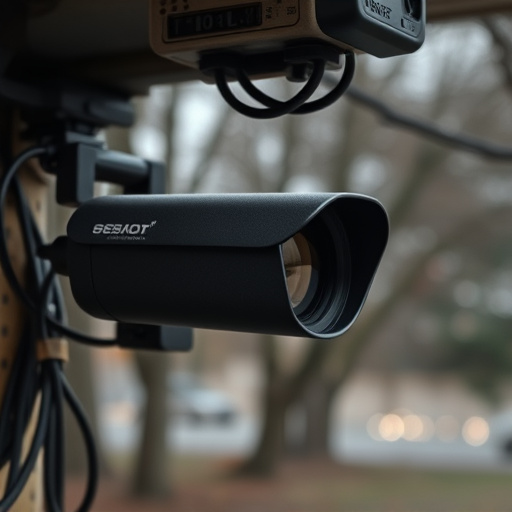Hidden recording device scanning in elderly care facilities is crucial for privacy and safety, employing advanced tech like signal detectors and algorithms to identify covert surveillance. The best hidden cameras for elderly care settings should include motion detection, night vision, two-way audio, and centralized monitoring, integrated into a unified system for real-time alerts. Ethical considerations, such as obtaining consent, maintaining transparency, and adhering to data protection laws, are paramount when deploying these devices to balance safety with privacy rights.
Hidden recording devices pose a significant concern in elderly care settings, prompting the need for advanced scanning methods. This article delves into the innovative tools and technologies used to detect these clandestine devices, focusing on strategies tailored for elderly care facilities. We explore effective techniques, such as signal scanning and non-invasive surveys, to identify hidden cameras, ensuring resident privacy and safety. Additionally, we examine legal and ethical considerations surrounding surveillance practices, highlighting the importance of utilizing best-in-class methods, like advanced signal analysis, to address this growing issue in elderly care.
- Understanding Hidden Recording Device Signal Scanning: Tools and Technologies
- Effective Strategies for Detecting Hidden Cameras in Elderly Care Settings
- Legal Implications and Ethical Considerations in Using Scanning Methods for Elderly Care Surveillance
Understanding Hidden Recording Device Signal Scanning: Tools and Technologies
Hidden recording device signal scanning is a critical process in identifying and neutralizing covert surveillance equipment, particularly in sensitive environments like elderly care facilities. Understanding the tools and technologies involved is key to ensuring privacy and safety. Advanced signal scanning methods utilize a range of specialized devices, from high-tech signal detectors to software algorithms that can detect even hidden or encrypted signals.
One of the primary challenges in this field is the evolving nature of hidden camera technology. As manufacturers introduce more sophisticated and compact devices, so must the scanning techniques adapt. The best hidden cameras for elderly care, for instance, often employ miniature lenses and infrared capabilities, making them nearly undetectable. Therefore, modern scanning tools are designed to penetrate these disguises, employing frequency analysis, signal strength mapping, and heat signature detection to pinpoint the source of any suspicious signals.
Effective Strategies for Detecting Hidden Cameras in Elderly Care Settings
Detecting hidden cameras in elderly care settings requires a strategic and comprehensive approach to ensure privacy and safety. Some effective strategies include regular, thorough physical inspections using specialized equipment like infrared cameras and metal detectors. These tools can help identify unusual devices or modifications that may indicate the presence of hidden cameras. Additionally, implementing robust security protocols, such as access control systems with biometric authentication, can deter potential intruders from installing covert surveillance equipment.
When choosing the best hidden cameras for elderly care, consider those designed with advanced features like motion detection, night vision, and two-way audio communication. These capabilities enable staff to monitor activities remotely while also facilitating direct interaction with residents. Furthermore, integrating these devices into a centralized monitoring system allows for real-time alerts and quick response times in case of any suspicious activity.
Legal Implications and Ethical Considerations in Using Scanning Methods for Elderly Care Surveillance
The use of hidden recording devices and signal scanning methods in elderly care raises significant legal and ethical concerns. In many jurisdictions, surveillance of individuals without their knowledge or consent is strictly regulated. While some countries allow for limited use of such devices under specific circumstances, like ensuring the safety and well-being of residents, there are strict guidelines regarding privacy rights and informed consent.
When considering the best hidden cameras for elderly care, it’s crucial to prioritize ethical and legal compliance over technological capabilities. Healthcare professionals and caregivers must balance the potential benefits of surveillance with the risks of invasion of privacy. Ethical use involves obtaining explicit consent from both the resident and their family, ensuring transparency about the monitoring system, and adhering to data protection regulations. This approach fosters trust between care providers and residents, upholding individual rights while enhancing safety measures.
Hidden recording device signal scanning is a complex yet essential tool for ensuring safety and privacy in elderly care settings. By understanding advanced technologies like signal analysis and employing effective detection strategies, it’s possible to uncover clandestine cameras without causing distress. While legal and ethical considerations must be navigated carefully, especially regarding surveillance of vulnerable populations, the best hidden cameras for elderly care can significantly enhance security and peace of mind for both residents and caregivers. Continued innovation in this field holds promise for creating safer, more transparent environments within senior living facilities.
